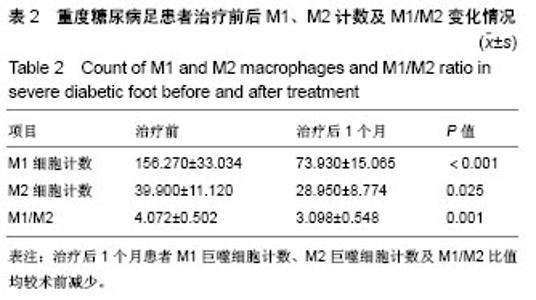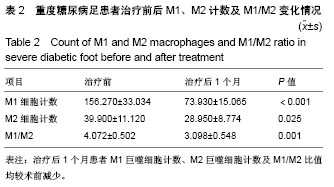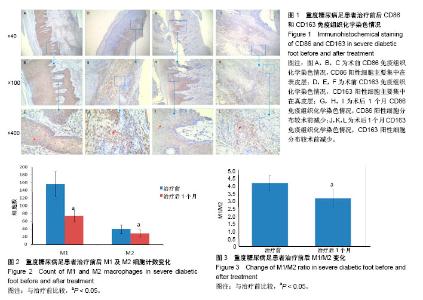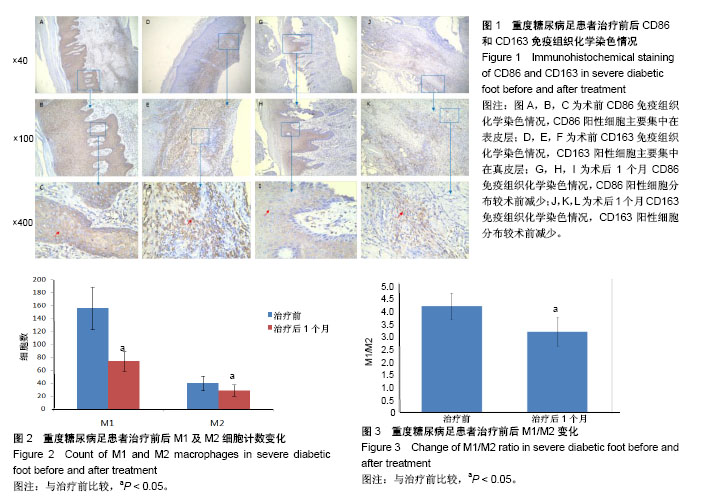| [1] Ibrahim A. IDF Clinical Practice Recommendation on the Diabetic Foot: A guide for healthcare professionals. Diabetes Res Clin Pract. 2017;127:285. [2] Suh HS, Oh TS, Lee HS, et al. A New Approach for Reconstruction of Diabetic Foot Wounds Using the Angiosome and Supermicrosurgery Concept. Plast Reconstr Surg. 2016;138(4):702e-9e. [3] 于吉祥,樊琳琳,李禹.分析糖尿病足坏疽合并下肢动脉硬化闭塞症介入治疗适应证的选择[J].糖尿病新世界,2016,19(1):52-53.[4] Shu X, Shu S, Tang S, et al. Efficiency of stem cell based therapy in the treatment of diabetic foot ulcer: a meta-analysis. Endocr J. 2018;65(4):403-413. [5] Rosenblum BI. A Retrospective Case Series of a Dehydrated Amniotic Membrane Allograft for Treatment of Unresolved Diabetic Foot Ulcers. J Am Podiatr Med Assoc. 2016;106(5): 328-337. [6] 毛启东,张喜婷,吴丹.经皮血管球囊成形术联合支架植入术治2型糖尿病足病的临床分析[J].重庆医学,2017(A02):212-213.[7] Armstrong DG, Ajm B, Bus SA. Diabetic Foot Ulcers and Their Recurrence. N Engl J Med. 2017;376(24):2367-2375. [8] Gubin AV, Borzunov DY, Marchenkova LO, et al. Contribution of G. A. Ilizarov to bone reconstruction: historical achievements and state of the art. Strategies Trauma Limb Reconstr. 2016;11(3):145-152. [9] 张定伟,秦泗河,臧建成.Ilizarov微循环重建技术治疗Wagner 4级糖尿病足临床疗效分析[J].中国矫形外科杂志, 2017,25(4): 354-356.[10] 冼呈,赵劲民,苏伟,等.外固定架骨搬移系统修复糖尿病足:功能与影像学评价[J].中国组织工程研究,2015,19(46):7539-7544.[11] 武黎黄英.胫骨横向搬移术治疗重度糖尿病足及其骨髓干细胞动员的机制研究[D].南宁:广西医科大学,2017.[12] 花奇凯,秦泗河,赵良军,等.Ilizarov技术胫骨横向骨搬移术治疗糖尿病足[J].中国矫形外科杂志,2017,25(4):303-307.[13] Bakker K, Schaper NC. The development of global consensus guidelines on the management and prevention of the diabetic foot 2011. Diabetes Metab Res Rev. 2012; 28(S1): 116-118. [14] Giacco F, Brownlee M. Oxidative stress and diabetic complications. Circ Res. 2010;107(9):1058-1070. [15] Pop-Busui R, Boulton AJM, Feldman EL, et al. Diabetic Neuropathy: A Position Statement by the American Diabetes Association. Diabetes Care. 2017;40(1):136-154. [16] Lavery L, Peters E, Williams JD, et al. Reevaluating the way we classify the diabetic foot: restructuring the diabetic foot risk classification system of the International Working Group on the Diabetic Foot. Diabetes Care. 2008;31(1):154-156. [17] Baltzis D, Eleftheriadou I, Veves A. Pathogenesis and Treatment of Impaired Wound Healing in Diabetes Mellitus: New Insights. Adv Ther. 2014;31(8):817-836. [18] Karri VVSR, Kuppusamy G, Talluri SV, et al. Current and emerging therapies in the management of diabetic foot ulcers. Curr Med Res Opin. 2015;32(3):1-68. [19] Hinchliffe RJ, Brownrigg JRW, Andros G, et al. Effectiveness of revascularization of the ulcerated foot in patients with diabetes and peripheral artery disease: a systematic review. Diabetes Metab Res Rev. 2016;32(S1):136-144. [20] Gurtner GC, Werner S, Barrandon Y, et al. Wound repair and regeneration. Nature. 2008;453(7193):314-321. [21] Wicks K, Torbica T, Mace KA. Myeloid cell dysfunction and the pathogenesis of the diabetic chronic wound. Semin Immunol. 2014;26(4):341-353. [22] Davis FM, Kimball A, Boniakowski A, et al. Dysfunctional Wound Healing in Diabetic Foot Ulcers: New Crossroads. Curr Diab Rep. 2018;18(1):2. [23] Wynn TA, Chawla A, Pollard JW. Macrophage biology in development, homeostasis and disease. Nature. 2013;496 (7446):445-455. [24] Guilliams M, Ginhoux F, Jakubzick C, et al. Dendritic cells, monocytes and macrophages: a unified nomenclature based on ontogeny. Nat Rev Immunol. 2014;14(8):571-578. [25] 熊思东.疾病发病中的巨噬细胞极化:机制与作用[J].现代免疫学, 2010(5):353-360.[26] Murray PJ, Allen JE, Biswas SK, et al. Macrophage activation and polarization: nomenclature and experimental guidelines. Immunity. 2014;41(1):14-20. [27] Mulder R, Banete A, Basta S. Spleen-derived macrophages are readily polarized into classically activated (M1) or alternatively activated (M2) states. Immunobiology. 2014;219 (10):737-745. |



